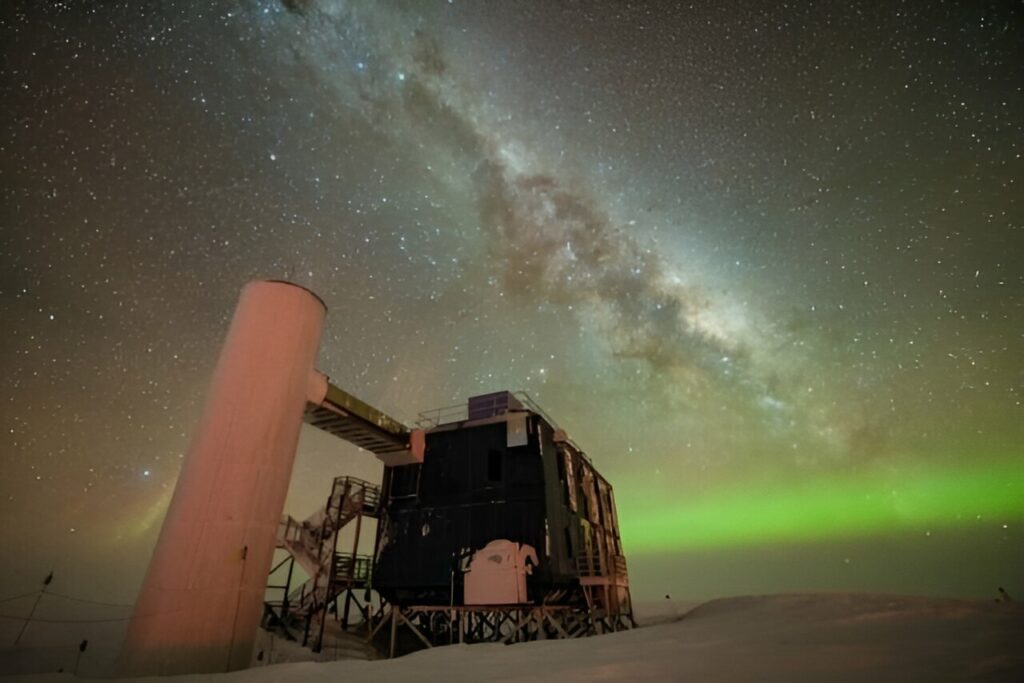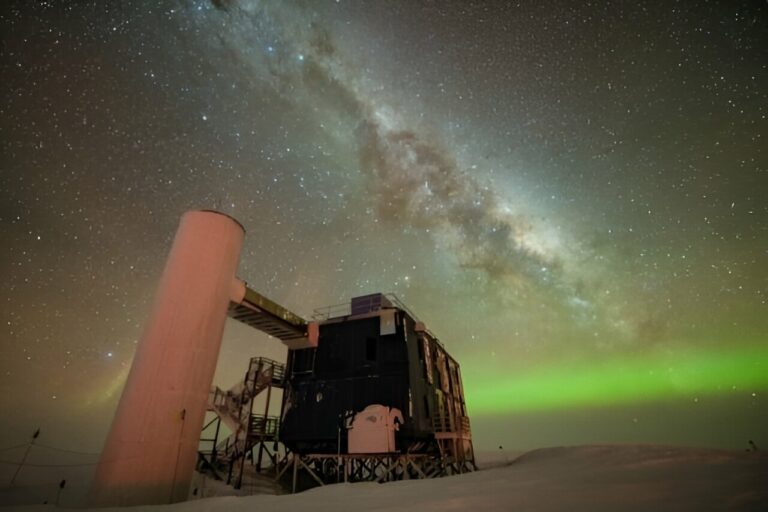Researchers Suggest Expanding IceCube by Eightfold
Situated at the Amundsen–Scott South Pole Station in Antarctica, the IceCube Neutrino Observatory, operated by the University of Wisconsin-Madison (UW-M), stands as one of the world’s most ambitious neutrino observatories. Behind this initiative is the IceCube Collaboration, a global assembly of 300 physicists representing 59 institutions across 14 countries.
Utilizing a cubic kilometer of ice as a protective shield against external interference, this observatory is specifically designed for neutrino research. Neutrinos, nearly massless subatomic particles, permeate normal matter continuously and are among the most prevalent entities in the universe. The scientific exploration of these particles aims to uncover insights into some of the most violent astrophysical phenomena, including supernovae, gamma-ray bursts, and the merging of black holes and neutron stars.
The Particle Physics Project Prioritization Panel (P5), a group of scientists advising the U.S. government on particle physics research, is actively involved in steering these endeavors.

In a recent preliminary report titled “Pathways to Innovation and Discovery in Particle Physics,” the P5 team proposed the strategic expansion of IceCube. This suggestion is integral to defining the trajectory of future astrophysics and particle physics research endeavors.
The report also advocates for support toward a distinct neutrino experiment called the Deep Underground Neutrino Experiment in Illinois, as well as various initiatives at CERN’s Large Hadron Collider, the Vera C. Rubin Observatory, the Cherenkov Telescope Array, and the development of next-generation ground-based telescopes for observing the cosmic microwave background (CMB). Notably, UW–Madison faculty members Tulika Bose and Kyle Cranmer, both P5 advisors, play crucial roles in these projects. B
ose, an experimental particle physicist engaged in the Compact Muon Solenoid experiment at the LHC, focuses on the quest for exotic particles, Dark Matter, and Standard Model measurements. Cranmer’s research aligns with the pursuit of exotic particles and physics beyond the Standard Model, encompassing the ATLAS experiment at the LHC. Collaboratively with their P5 peers, they spent a substantial part of the past year evaluating the future trajectory of particle physics and recommending projects to propel the field forward.
A primary concern of the P5 panel revolves around maximizing the federal government’s limited funding for particle physics research over the next decade. This concern underlies the recommended expansion of IceCube, referred to informally as ICECube-Gen2. The panel contends that upgrading the existing observatory represents a cost-effective means of enhancing the scientific community’s capacity to detect and analyze neutrinos. According to Albrecht Karle, a UW–Madison physics professor leading the IceCube upgrade, the use of new technology and precision modeling of the ice could result in an eightfold expansion of the detection volume at a comparable cost to the current IceCube.
Apart from supporting the IceCube expansion and other major experiments, the panel advocates for an improved funding equilibrium among projects of varying scales, a more proactive research and development program to potentially yield a next-generation particle accelerator, and the broadening of the nation’s advanced technology workforce. Bose expresses particular enthusiasm for the prospect of a new particle accelerator in the U.S., envisioning it as an unprecedented global facility offering new insights into the mysteries of the quantum universe.
The recommendations of the P5 panel are currently undergoing review by the High Energy Physics Advisory Panel (HEPAP), a division of the U.S. Department of Energy (DoE), with discussions scheduled for December 8th. The complete P5 report can be accessed online on the DoE’s website, and a concise summary is available on the HEPAP site.
This article is republished from PhysORG under a Creative Commons license. Read the original article.
Do not forget to share your opinion with us to provide you with the best posts !





0 Comments